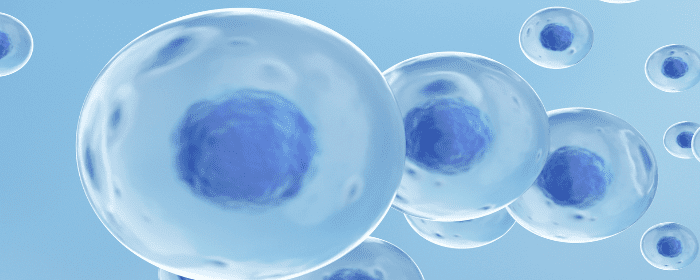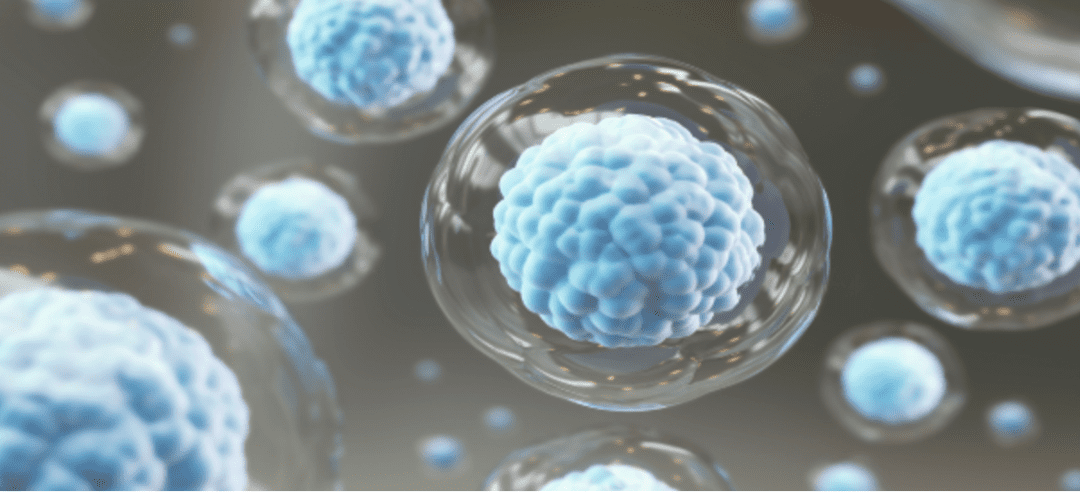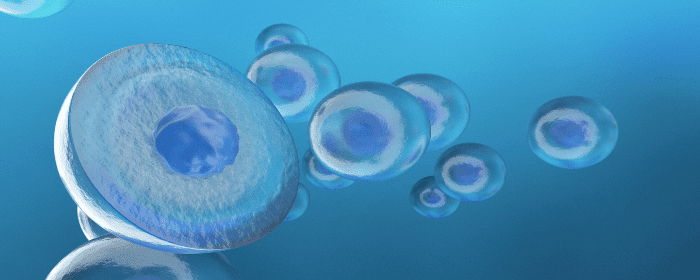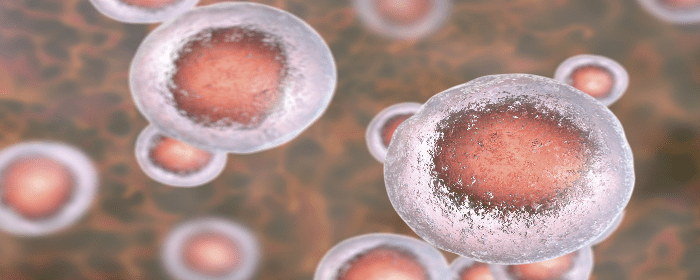
by admin | Jun 3, 2022 | Parkinson's Disease, Stem Cell Research
Research has shown neuroinflammation to have a significant role in the pathogenesis of Parkinson’s disease (PD). Much of this same research has also demonstrated mesenchymal stem cells (MSCs), and specifically, allogeneic bone marrow-derived MSCs, can be effectively used as an immunomodulatory therapy for the potential treatment of PD.
The goal of Schiess et al.’s study was to evaluate the safety and tolerability of first-of-its-kind intravenous allogeneic bone marrow-derived MSCs (allo-hMSCs) in patients with PD.
Neurological disorders continue to be the leading cause of disability-adjusted life years lost worldwide (a statistical measure of years of healthy life lost as a result of death or disability relating to the constitution). While the numbers of those diagnosed with neurological disorders, including stroke, multiple sclerosis, motor neuron disease, and dementia continue to increase at a rapid rate, none are growing as fast as PD.
Considering the rapid progression of progressively intensifying symptoms associated with PD and the relatively poor progress in the discovery of therapies to prevent, or even slow, progression of PD, the authors identified the identification of effective and safe disease-modifying therapies for PD to be a priority.
As part of this study, Schiess et al. studied the peripheral immune system in PD neurodegeneration through the evaluation of LPS rat models, glial cells, and cerebrospinal fluid gathered from patients. As a result of these investigations, the authors determined that an adaptive immune response does contribute to progression supporting the rationale for using MSCs as a potential therapy for PD.
To evaluate the effectiveness of this therapy, Scheiss et al. developed and conducted a single-center, open-label, ascending-dose-escalation phase 1 clinical study involving 20 patients with mild to moderate PD. Participants were assigned to single intravenous doses of 1 of 4 doses and evaluated at weeks 3, 12, 24, and 52 post-infusion.
In addition to evaluating the safety and tolerability of an intravenous infusion of bone marrow-derived allow-hMSCs, the research team also evaluated participants for relevant biomarkers for the mechanism of action and clinical assessment of PD progression.
The authors point out that while there were no serious adverse reactions related to the infusion and no responses to donor-specific human leukocyte antigens, the most commonly reported side effect was dyskinesias and hypertension. Further studies will need to monitor the emergence or exacerbation of post-infusion dyskinesias and hypertension to better understand their occurrence as part of this study.
In conclusion, Sheiss et al. found that a single infusion of allogeneic MSCs ranging from 1 to 10×106 intravenous allo-hMSCs/kg was safe, well tolerated, and not immunogenic in patients with mild-to-moderate PD. The authors also found that peripheral inflammation markers appeared to be reduced at 52 weeks after receiving the highest dose, leading to the conclusion that the highest dose had the most significant effect at the 52-week interval.
Based on these findings, the authors recommend moving forward with a phase 2 randomized, placebo-controlled efficacy trial using allo-hMSCs in a larger population of well-defined Parkinson’s disease patients.
Source: “Allogeneic Bone Marrow-Derived Mesenchymal Stem Cell Safety in ….” 27 Mar. 2021, https://movementdisorders.onlinelibrary.wiley.com/doi/full/10.1002/mds.28582.

by admin | May 6, 2022 | Stem Cell Therapy, Mesenchymal Stem Cells, Multiple Sclerosis, Stem Cell Research
Multiple sclerosis (MS) is a chronic inflammatory disease that attacks myelin, the protective sheath that covers nerves and causes progressive and serious communication issues between the brain, central nervous system, and the rest of the body[1].
Currently, it’s estimated that over 2.3 million people worldwide, and over one million people in the US have a diagnosis of MS[2].
While there have been significant improvements in treatments designed to stabilize, delay, and even improve symptoms of MS, new and more effective treatments are needed to improve the long-term outcome associated with the condition.
One area currently being investigated as a potential therapeutic option for treating MS is the use of regenerative medicine, also known as stem cell therapy, and specifically treatment using mesenchymal stem cells (MSCs).
In this review of evidence from preclinical and clinical studies, Gugliandolo et al. examine studies involving the use of MSCs or their derivatives in vivo models of MS and patients affected by MS. The authors also examine and discuss the feasibility of autologous MSCs therapy for MS patients.
Specifically, and when assessed in terms of effectiveness when treating MS, the therapeutic potential of MSCs was associated with their differentiation capacity and paracrine effects, their ability to differentiate toward oligodendrocytes and express oligodendrocyte progenitor cell (OPC) markers, and their capacity for homing (moving towards the damaged area following chemical gradients).
As part of this review, the authors also examined the effectiveness of various sources of MSC in MS models, these sources included bone marrow MSCs (BM-MSCs), adipose tissue-derived MSCs (AD-MSCs), periodontal ligament stem cells (PDLSCs), skin-derived MSCs (S-MSCs), Wharton’s jelly-derived MSCs (WJ-MSCs), human umbilical cord MSCs (UCMSC), human amnion mesenchymal cells (AMCs), placental derived MSCs (PMSCs), and decidua derived MSCs (DMSCs). According to the research reviewed by Gugliandolo et al., all MSCs, regardless of where they were harvested from, demonstrated beneficial effects in the therapeutic treatment of MS.
Specifically, the results demonstrated that MSCs were able to produce some form of protective effects in reducing inflammatory cell infiltration, disease score, demyelination, and blood-brain barrier disruption.
A review of 29 phase 1 or 2 clinical trials registered on clinicaltrials.gov demonstrated that MSCs, regardless of the type and method of administration, demonstrated to be safe and absent of severe adverse effects with the majority demonstrating measurable improvements when used in MS patients.
While clinical trials demonstrated the safety of administration of MSC in MS patients, the authors were particularly interested in learning if autologous MSC transplantation presented some advantages over heterologous administration.
The authors of this review found that samples obtained from healthy controls and MS patients showed similar features, indicating the possibility of autologous stem cell therapy in MS patients. However, other studies found that MSCs obtained from MS patients exhibited a different transcriptional pattern and fewer immunosuppressive functions compared to healthy donor MSCs.
Gugliandolo et al. point out that limits to these experimental studies include the use of animals of a single gender, given that sex-dependent differences exist and the use of different MS models, different number of transplanted cells, different MSCs sources, and routes of administration. These limitations make it difficult to define the optimal treatment in terms of cell type, dose, and administration conditions.
The authors conclude that clinical trials demonstrate the safety and feasibility of MSCs treatment, and also some improvements, but more data on larger cohorts are required to establish their efficacy. Considering the controversial results pertaining to the features of MSCs derived from MS patients, the authors also call for additional research in order to conclusively determine the safety and efficacy of autologous MSCs therapy in MS patients.
Source: “Mesenchymal Stem Cells in Multiple Sclerosis – NCBI.” 17 Nov. 2020, https://www.ncbi.nlm.nih.gov/pmc/articles/PMC7698327/.
[1] “Multiple sclerosis – Symptoms and causes – Mayo Clinic.” 7 Jan. 2022, https://www.mayoclinic.org/diseases-conditions/multiple-sclerosis/symptoms-causes/syc-20350269.
[2] “Understanding MS | National Multiple Sclerosis Society.” https://www.nationalmssociety.org/What-is-MS/MS-FAQ-s.

by Stemedix | Apr 11, 2022 | Parkinson's Disease, Mesenchymal Stem Cells, Stem Cell Therapy
Regenerative medicine, also known as stem cell therapy, is emerging as a viable treatment for Parkinson’s disease as clinical trials move through the FDA approval process. Patients in clinical trials see positive results from mesenchymal stem cell therapy for Parkinson’s Disease.
What Is Parkinson’s Disease?
Parkinson’s disease is a progressive, neurodegenerative condition. It occurs when dopamine-producing brain cells stop working or die. Dopamine’s role in the body is to send messages between nerve cells or from nerve cells to muscle cells, affecting the body’s physical and mental functions.
Symptoms of Parkinson’s start gradually, and the disease worsens over time. Early symptoms include tremors in the hands, rigidity, and slowness of movement. Patients with Parkinson’s also experience difficulty with balance, and eventually, with speech, writing, and automatic muscle movement such as blinking.
While there’s currently no cure for Parkinson’s, there are medications that patients can take to manage symptoms. Some symptoms are also relieved from surgery to regulate specific brain areas.
Patients with Parkinson’s disease experience a progressive decline in their ability to function, with treatments only offering some relief. The emergence of mesenchymal stem cell therapy as an option to reverse the damage and halt the progression of Parkinson’s disease is an exciting development.
What Are Mesenchymal Stem Cells?
Stem cells are considered to be the building blocks of cells. All specialized cells in the body come from stem cells. When stem cells divide, they either produce more stem cells, called daughter cells, or differentiate into specialized cells, such as bone, blood, or brain cells.
Mesenchymal stem cells (MSCs) are adult stem cells commonly found in bone marrow. They also exist in adipose (fat), umbilical cord tissue, amniotic fluid, and other locations. MSCs remain dormant in the bone marrow until they’re needed to facilitate healing in the body.
MSCs differentiate into:
- Bone cells
- Muscle cells
- Skin cells
- Cartilage
- Neural cells
- Corneal cells
MSCs are present throughout your life, but they age as the body ages, making them less effective and concentrated over time.
How Can Mesenchymal Stem Cells Benefit Those with Parkinson’s Disease?
In recent clinical trials using mesenchymal stem cells on Parkinson’s patients, the cells significantly improved patients’ symptoms, including facial expressions, gait, and rigidity or “freezing” episodes. Some of the patients in this study substantially reduced their dosages of medicines used to control Parkinson’s symptoms.
In a 2005 study, researchers determined that stem cells may be capable of differentiating into dopamine neurons, which are damaged or destroyed with Parkinson’s.
While the true potential of mesenchymal stem cell benefits in Parkinson’s patients is still being investigated, there is reason to believe that patients with the neurodegenerative condition could experience a significant improvement in their quality of life with stem cell therapy. If you are interested in learning more about Mesenchymal Stem Cell Therapy for Parkinson’s Disease, contact us today at Stemedix!

by admin | Apr 1, 2022 | Stem Cell Therapy, Adipose, Mesenchymal Stem Cells, Musculoskeletal, Wharton's Jelly
Articular cartilage, found on the surface of most musculoskeletal joints, distributes and transfers forces between bones and joints, provides a smooth surface for joint mobility, and plays an important role in human mobility.
However, articular cartilage is also easily susceptible to damage, but difficult to repair itself on its own (primarily due to the fact it is mostly avascular). Over time, the inability of articular cartilage to repair itself leads to progressive joint pain, disfigurement, movement disorders, and ultimately osteoarthritis.
The CDC estimates that nearly 33 million Americans are currently affected by osteoarthritis, most often in the form of pain, stiffness, decreased mobility and range of motion, and swelling in the joints[1].
Current treatment methods, including microfracture technology, autologous or allogeneic cartilage transplantation, and autologous chondrocyte implantation (ACI) have demonstrated the ability to repair and regenerate fibrous cartilage, but not articular cartilage required for smooth, fluid, natural mobility.
To address this issue, recent research has focused on the efficacy of stem cells, and specifically mesenchymal stem cells (MSCs) found in bone marrow, adipose tissue, synovial membrane, and umbilical cord Wharton’s jelly, as potential therapeutic treatments for regeneration of articular cartilage. MSCs are particularly of interest due to their demonstrated abilities of self-renewal, multi-differentiation, and immunoregulation.
While the use of MSCs has demonstrated tremendous potential in the field of regenerative therapy, one notable drawback continues to be unstable or suboptimal results resulting from the heterogeneity of various mesenchymal stem cells.
Specifically, the stability and efficacy of MSCs appear to differ based on a number of factors, including the donor, the tissue source, and their ability for proliferation, differentiation, and immunoregulation.
For example, some of the key heterological differences highlighted in this review include the efficacy of MSCs based on donor’s age (with younger donors providing higher quality MSCs), Wharton’s Jelly MSCs showing greater prospects for application in cartilage regeneration than other MSCs, and differences within specific MSC subpopulations.
The authors of this review acknowledge the potential of MSCs in repairing arterial cartilage, but also point out that there needs to be a deeper understanding of the heterogeneity of various MSCs in order to improve the efficiency of MSC-based therapies designed to repair arterial cartilage. In addition, the authors also call for greater standardization in MSC isolation and harvesting methods among laboratories in order to provide better consistency with respect to results obtained from studies using MSCs.
Source: “Heterogeneity of mesenchymal stem cells in cartilage regeneration.” 19 Mar. 2021, https://www.nature.com/articles/s41536-021-00122-6?elqTrackId=5517bd20493b470cb34fd0e8bc1f6ef9.
[1] “Osteoarthritis (OA) | Arthritis | CDC.” https://www.cdc.gov/arthritis/basics/osteoarthritis.htm.

by admin | Jan 21, 2022 | Stem Cell Therapy, Mesenchymal Stem Cells, Stem Cell Research, Stroke
According to the CDC, stroke continues to be a major cause of serious disability for adults. It is also estimated that nearly 800,000 people in the United States have a stroke each year[1]. While 80% of those experiencing a stroke survive for at least one year following the event, more than 70% will continue to experience long-term disabilities.
Stroke is divided into three distinct phases: acute, subacute, and chronic phases. The acute phase of stroke occurs within 24 hours of the actual ischemic event. The subacute phase starts at 24 hours and lasts up to 3 months. The chronic phase of stroke, by definition, starts at 3 months.
While stroke patients tend to see some response to rehabilitation efforts occurring in the chronic phase, they tend to quickly plateau, leaving many with serious chronic neurological and functional disabilities. To date, there are no approved treatments for the chronic phase of stroke.
For the purposes of this study, Steinberg et al. report the two-year outcomes of their phase 1/2a study examining chronic stroke patients after implantation of mesenchymal stem cells (MSCs). This study specifically examined the outcomes of 18 patients who were at least 6 months post-stroke onset and had chronic motor deficits secondary to the nonhemorrhagic stroke.
At the 1-year point of this study, the authors reported the implantation of bone marrow-derived MSCs (BMD MSCs) was generally safe, well-tolerated, and associated with significant improvement in clinical outcomes.
There were no correlations between improvement in clinical outcomes and cell dose, baseline patient age, or baseline stroke severity. However, two years after implantation of MSCs, those enrolled in this study experienced significant improvement in motor impairment scales as indicated by a number of scores, including the ESS, NIHSS, F-M total, and FMMS scores.
Although all enrolled patients experienced at least one Treatment-Emergent Adverse Event (TEAE), with headache and nausea being the most common, 94.4% of the TEAEs were determined to be unrelated and no one withdrew from the study.
Interestingly, the authors reported that there also appears to be a significant correlation between the size of newly appearing transient lesions primarily in or adjacent to the premotor cortex – a finding that remained consistent at month 12 and month 24 of this study.
While Steinberg et al.’s reported findings are encouraging, the authors point out that the small scale and uncontrolled study design mean the findings should also be interpreted with caution.
Steinberg et al conclude that their findings associated with this completed, open-label, single-arm phase 1/2a study was consistent with the data at the 1-year point and indicated that treatment of chronic stroke with BMD MSCs after 2 years continued to be safe and was associated with sustained and significant improvements in clinical outcomes.
Given the findings of this study, the authors highlight the potential of MCSs, and specifically SB623 cells used in this study, as a potential treatment for patients with chronic ischemic stroke.
Source: “Two-year safety and clinical outcomes in chronic ischemic stroke ….” 23 Nov. 2018, https://pubmed.ncbi.nlm.nih.gov/30497166/.
[1] “Stroke | cdc.gov.” https://www.cdc.gov/stroke/index.htm.






 St. Petersburg, Florida
St. Petersburg, Florida
